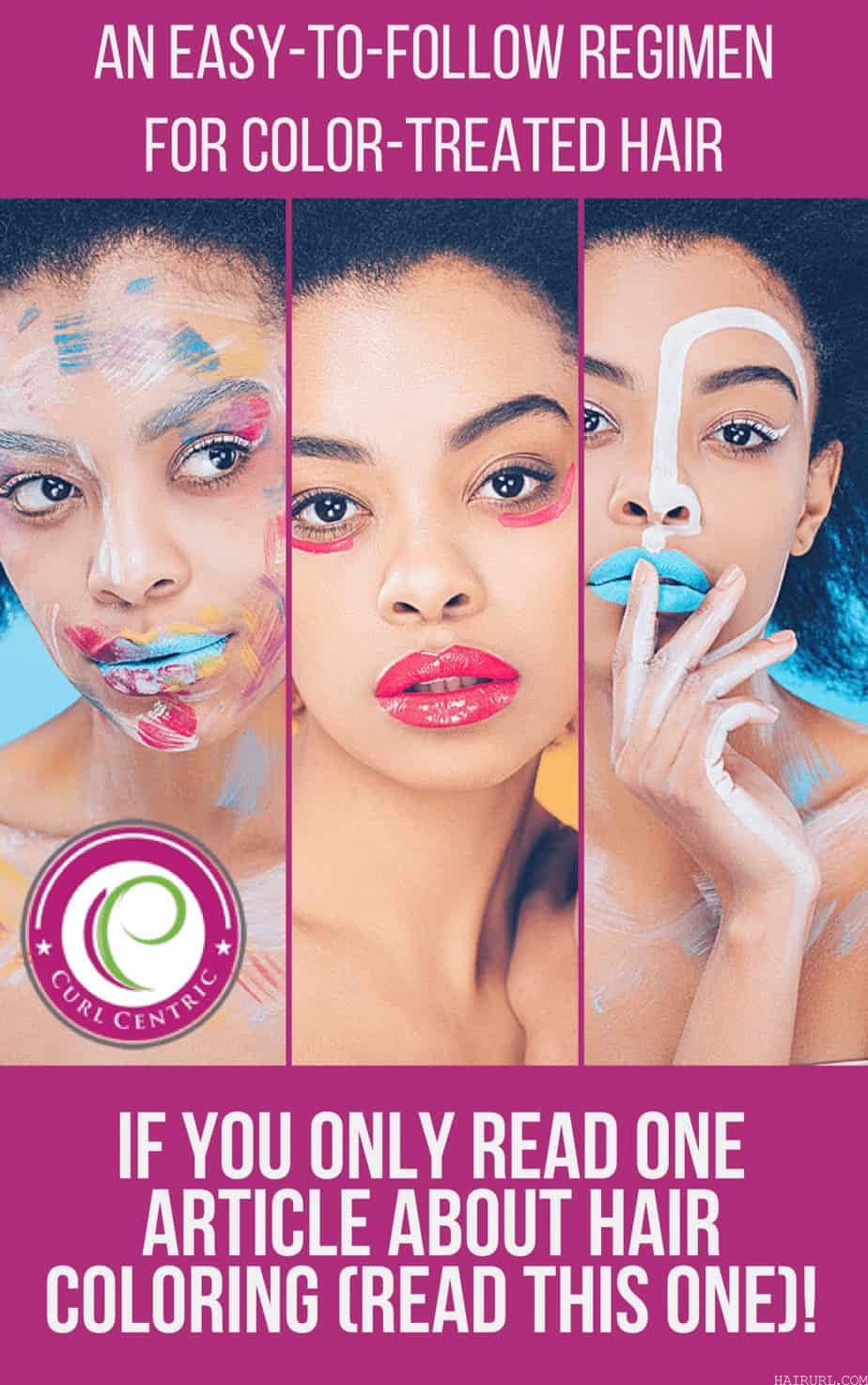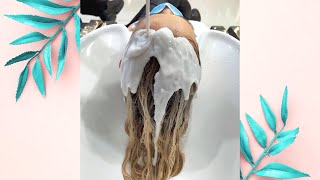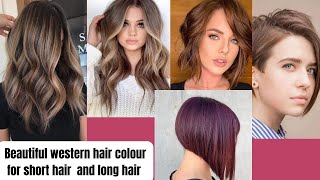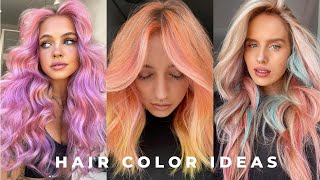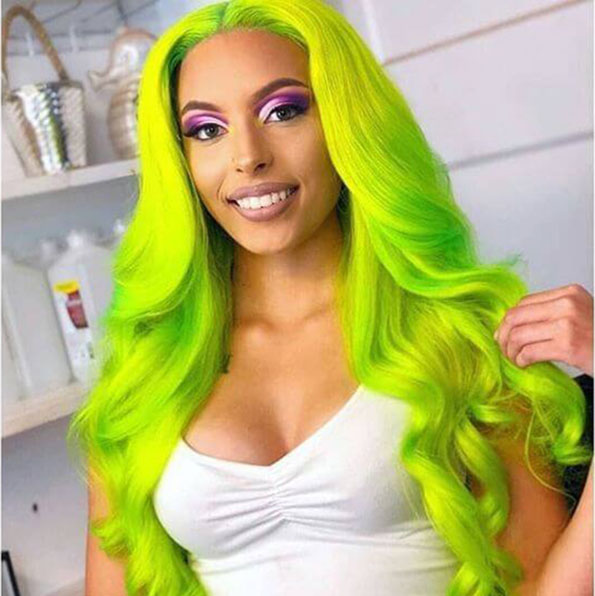How To Do Hair Coloring for Beginners at Home: DIY Guide
- Posted on 26 December, 2018
- Hot Topic
- By Kenneth
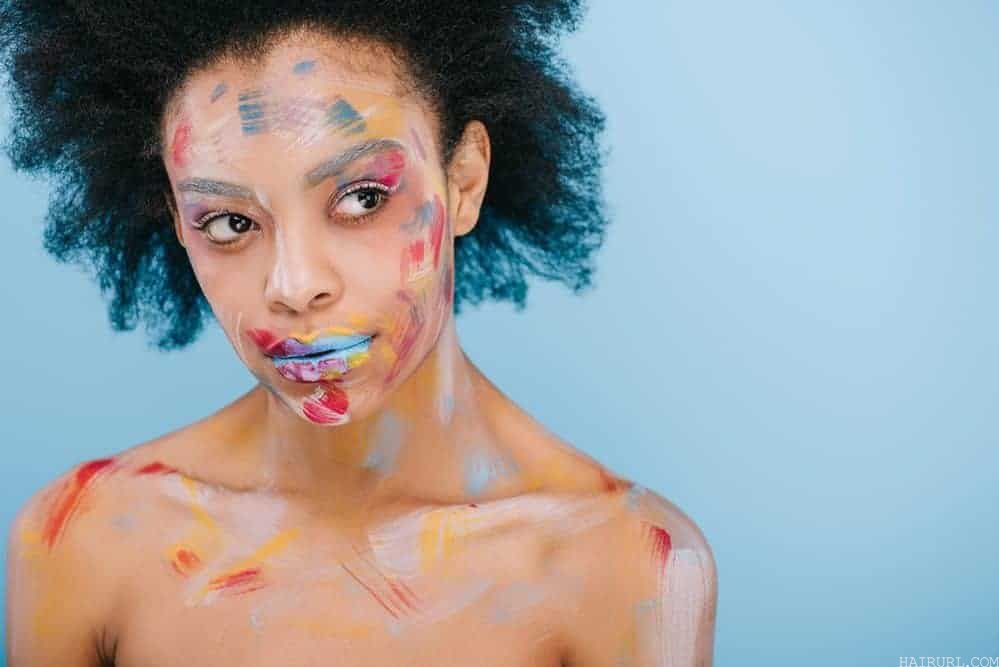
If your hair has been color-treated, it has much less strength compared to hair that hasn’t been color-treated (i.e., non-colored treated hair).
This is especially true if your hair has been processed twice. For example, if your hair has been relaxed and colored it has been processed twice, potentially leading to significant hair damage.
It’s important to understand that the feel and texture of your hair will be altered after any chemical processing, as hair will have a coarser texture and feel thicker and drier.
The change in texture and feel is due to the damage that was done to the cuticle and inner layers within the hair shaft.
If you regularly use permanent hair dye on your hair, you will notice that your hair will not feel the same way it did prior to the coloring process. This is due to the loss of protein, and the depletion of moisture (i.e., leading to dry hair).
Using permanent hair coloring techniques damages the hair’s natural keratin protein structure, increasing the hair’s porosity, which in turn makes the hair strands more susceptible to further damage.
The damage reduces the hair’s ability to maintain moisture, often resulting in significant dryness.
However, working towards repairing the damage (or preventing as much of the damage as possible) can not only help you retain the color for a longer period but can also help your hair retain its moisture.
This article will discuss protective measures to take before coloring your hair and a color-safe hair regimen leading to a vibrant, healthy appearance.
Tips Before Coloring Your Hair
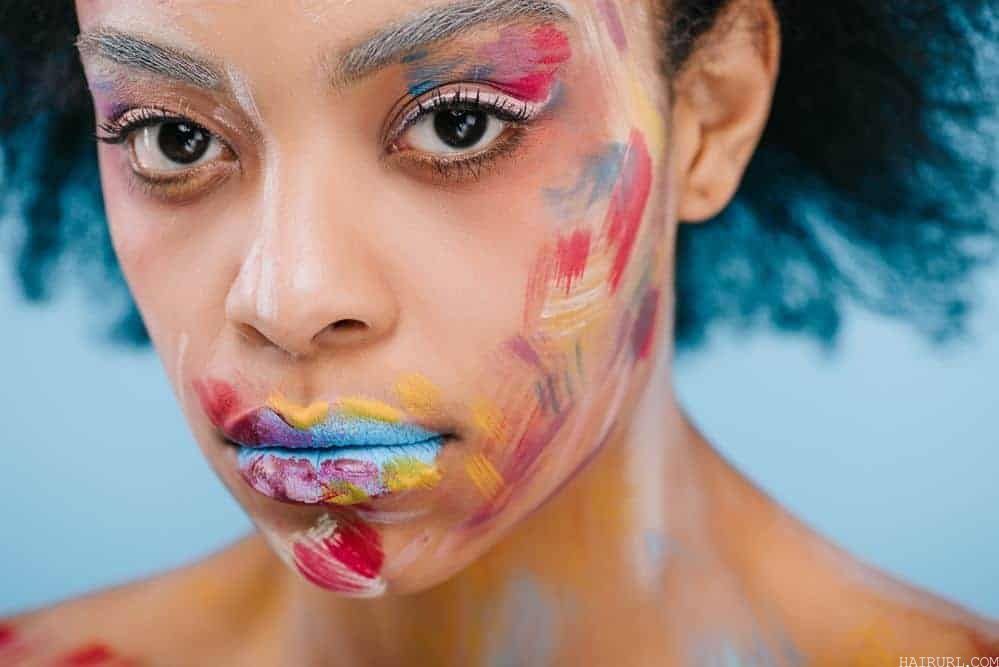
When Can I Color My Hair After a Perm or Chemical Relaxer?
First, make sure that you are relaxing your hair and then coloring your hair, not vice versa. We recommend waiting a minimum of two weeks after a chemical relaxer to color your hair.
In our experience, if you don’t wait two weeks and color your hair more quickly, damage to your hair will occur and it may not be repairable. In the past, we’ve seen women suffer from significant hair breakage.
There is logic behind our recommendations. For example, chemical relaxers are much harsher on the hair than hair coloring treatments, so the preferred approach is to relax your hair when your hair is in its strongest state.
You can subsequently use mild protein treatments and deep conditioning treatments to rebuild over a two-week period prior to coloring your hair.
We don’t recommend that ladies use chemical relaxers, although if you decide to make that decision, we always recommend that you apply either hair grease (e.g., Vaseline) or your favorite hair oil to protect your older, previously relaxed hair (somewhat) from the harsh chemicals when you’re receiving a touch-up relaxer.
Can I Dye My Hair If It’s Breaking? Can My Hair Handle the Damage Associated with Coloring?
We don’t recommend coloring your hair if it’s breaking heavily, although it’s ultimately your choice. Before you color your hair, there are some things you should consider.
Make sure that your hair is strong enough to handle a chemical process.
If you’re experiencing significant breakage or shedding, your hair is weakened or damaged and if you decide to color your hair, the results may be poor. Actually, you’re likely to make the condition of your hair even worse.
Are There Steps I Should Take Before Coloring My Hair?

Textured hair types already need more moisture compared to other types of hair, but coloring textured hair amplifies the need for a regular moisturizing routine.
Protein should also be incorporated into your moisturizing routine to aid in repairing your hair’s strength post-coloring.
This section will focus on a color-safe hair regimen, including implementing the appropriate amounts of moisture and protein.
Again, it must not be discounted, you should not color hair that has been severely damaged because your color won’t last as long and you will not receive the results that you’re expecting. In most cases, your hair will end up with even more damage.
Shampooing Colored Hair
To maintain your newly deposited hair color for a longer period of time and keep its vibrancy, it’s important that you don’t take very hot showers. Warm to lukewarm showers are recommended for color-treated hair.
Hot water has a drying effect on your hair, regardless of whether your hair has been color-treated or not. This “drying effect” will also cause the superficial hair color to fade. When washing your hair with hot water you also run the risk of stripping the sebum from your scalp.
Ensure that you’re not shampooing your hair with hard water and stay away from pools, lakes, beaches, and oceans that might contain saltwater or chlorinated water.
When choosing a post-color shampoo, choose one that won’t strip your hair of its natural oils because it will also strip the color from your hair.
You will want to choose shampoos specifically formulated for colored hair, as they are more acidic and will help alleviate the coarseness that you feel in your hair post-coloring.
Learn more about acidic shampoos by reading our guide on utilizing pH balanced shampoos and conditioners. However, if the shampoo that you regularly use is a gentle, sulfate-free product, you can continue using it.
For the first couple weeks post-coloring, minimize shampooing your hair.
We recommend shampooing as little as possible following color treatment, as the goal is to keep the cuticle scales protected and smooth. Harsh shampoos can cause cuticle damage, leading to breakage over the course of time.
Conditioning Color Treated Hair
The first two weeks following a hair coloring session are essential to prevent further damage to your hair. So, in addition to the other things that we’ve mentioned, avoid any heat styling. This includes hair steamers, hood hair dryers, and flat irons.
Every time you shampoo your hair, follow up with a 20-30 minute deep conditioning treatment with either a protein-based conditioner or a moisture-based conditioner. If you need product recommendations, we recommend reading the ultimate guide to finding the best natural hair products for your regimen.
Typically adding heat to your deep conditioning session enhances the results, but adding heat to freshly colored hair will deteriorate the color.
CURL TALK: The TRUTH About Dyeing Your Hair | BiancaReneeTodayIn this video, Bianca Renee answers questions about coloring your hair during Curl Talk. Many of these questions have been answered within this article, but there are some unique tips that Bianca provides in this video. So, I highly recommend watching as she provides a unique perspective, as everyone’s hair is a bit different.Sample Color Treated Hair Regimen
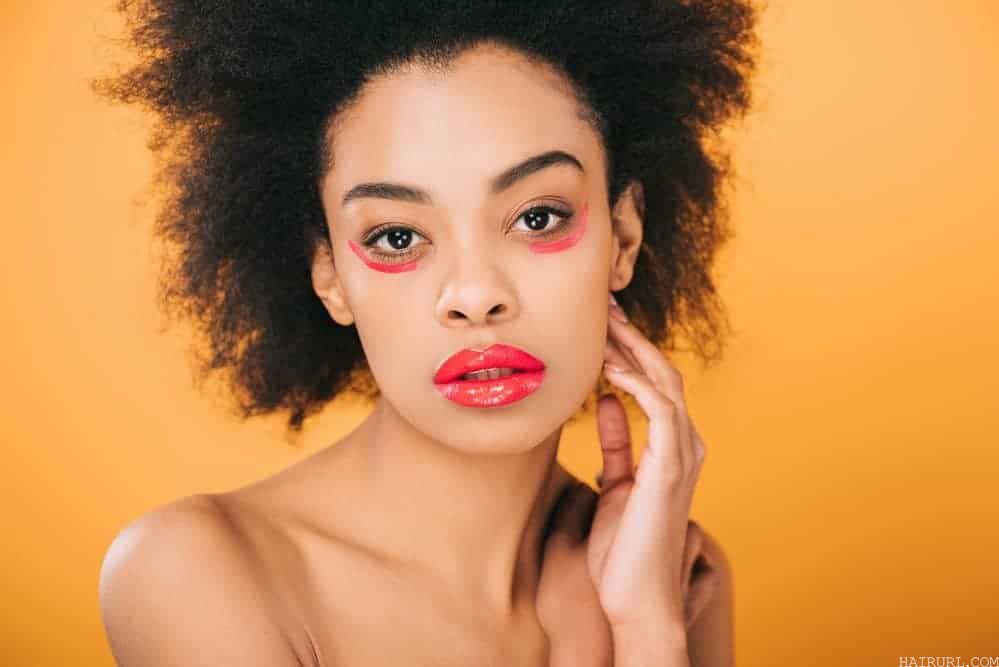
As mentioned earlier in this article, you should incorporate regular deep conditioning sessions for the first few weeks after coloring your hair, but you should also alternate between moisture-based conditioners and protein-based conditioners to help with increased porosity.
Further, we recommend investing in a daily water-based moisturizer, which you can seal in with oil.
Color Treated Hair Products: Step-by-Step Hair Care Regimen
Products that should be included in your regimen:
- Chelating Shampoo (should be used prior to coloring your hair, and if you have hard water or enjoy swimming)
- Moisturizing Shampoo (formulated for color treated hair)
- Protein Reconstructor Conditioner
- Water-based Protein Conditioner
- Water-based Moisturizing Conditioner
- Oil (use your favorite hair oil)
Week 1: Deep condition your hair with a moisture-based conditioner, without using heat. You can add a small, nickel-sized amount of protein reconstructing conditioner to your moisture-based conditioner if your hair is feeling too spongy.
Week 2: Deep condition your hair with a protein-based conditioner. Once again, you should not use heat during this deep conditioning treatment. Shortly afterward, follow-up with a brief moisture-based conditioning treatment for no more than 10-15 minutes.
Week 3 and beyond: Listen to your hair. By this, we simply mean it’s time to tailor your hair care regimen to your hair’s specific needs. As a guide, we often recommend alternating between moisture-based treatments and protein-based treatments to ensure that your hair is getting a good balance. However, the reality is that your hair might need more of one or the other depending on a number of factors, so personalize this plan to meet your individual needs.
Pros + Cons | Should You Color Dye Your Natural Hair | HONEST ThoughtsWe’ve always been fans of Whitney White and this video doesn’t disappoint. If you’re thinking about coloring your natural hair, Whitney provides her unfiltered opinion about her hair coloring experience in this video. As we mention in this article, taking care of color-treated hair is quite a bit of work. After watching this video, let us know if it changed your opinion in the comments.Keep Your Hair Color from Fading (Quickly)

Over time your hair coloring will undoubtedly fade, however, there are some things that you can do to keep your hair color from fading quickly.
If You’re Using Heat While Coloring Your Hair, Follow These Tips
Some coloring processes require heat; if this is true for your coloring process, then you should allow your hair to cool down before rinsing out the dye.
If you rinse your hair while it’s still hot, you’re likely to send your hair color down the drain. This is especially true with deposit-only colors and temporary color rinses, so take the extra time to allow your hair to cool down after using heat.
Water Can Cause Multiple Problems with Freshly Colored Hair
The problems can be broken down into three basic categories: (1) frequency of water usage, (2) type of water used, and (3) water temperature.
The Frequency of Water Usage
Anyone who has colored their hair knows that your hair color will fade a little each time you wash your hair. This is true for all types of hair coloring processes, including permanent, semi-permanent, and temporary hair dyes.
Each wash will strip a little bit of color from your hair, with the temporary coloring processes lasting for much less time. To ensure that your color lasts longer, do not use any water on your hair for at least one day following the initial color application.
When creating your color-safe regimen, we recommend that you only wash your hair once per week, although a 4-7 day window might be preferred for some women.
This will protect your color, and reduce stress on the cuticle mitigating hair damage. Continue to use a balance of protein and moisture-based deep conditioning treatments following your wash routine.
The Type of Water Used
As mentioned earlier, hard water and chlorinated water, from pools, is detrimental to color treated hair. We recommend that you invest in a water filter for your shower to purify the water used on your hair.
Swimmers should saturate their hair in freshwater before jumping into the pool, as this will help reduce the amount of chlorinated water that your hair absorbs. From a product standpoint, we recommend that swimmers and those with hard water use a chelating shampoo for regular color maintenance.
Water Temperature
As mentioned previously, hot water will fade more of your hair color compared to cooler water, and hot water makes the hair dry out. Try to use lukewarm to cool water as often as you can.
What Products to Use
Make sure your hair products are designated for colored-treated hair, as some strong shampoos can fade your hair coloring more quickly.
Some products that are geared towards colored hair will include small amounts of hair coloring or color enhancers that help your hair color remain vibrant longer.
In addition to using color-safe shampoos and conditioners, consider implementing products into your routine that contains sunscreen and hair oil. The goal is to protect your hair and skin.
Make sure you use a moisturizer that has a protein! Continuously conditioning helps maintain color longer.
Products that contain alcohols, such as certain hair sprays, mousses, spritzes and gels can fade your hair color.
Related Questions
- What’s the Difference Between 1B and 2 Hair Color?
- Can Coconut Oil Remove Hair Color?
- Will L’Oréal Hicolor Damage My Hair?
- Can You Dye Black Hair Without Bleaching?
- Does Hair Dye Kill Lice and Their Eggs?
- Can You Dye Wet Hair?
Some Final Tips, Thoughts, and Considerations
Avoid blow drying and heat styling, as much as possible, as these techniques can also cause color fading and deplete the moisture in your hair. Further, using too much heat can severely damage already weakened hair.
Don’t go outside when your hair is damp, as excessive exposure to the sun can increase the fading of your hair color. As mentioned previously, take the recommended precautions if you’re a swimmer and consider UV protection.
Finally, incorporating clear color rinses into your hair care routine would benefit your hair, as it would provide shine and aid in prolonging the duration of your color. They’re easy to do as well!
As a matter of fact, anyone can utilize a clear color rinse, even if their hair has not been colored!
